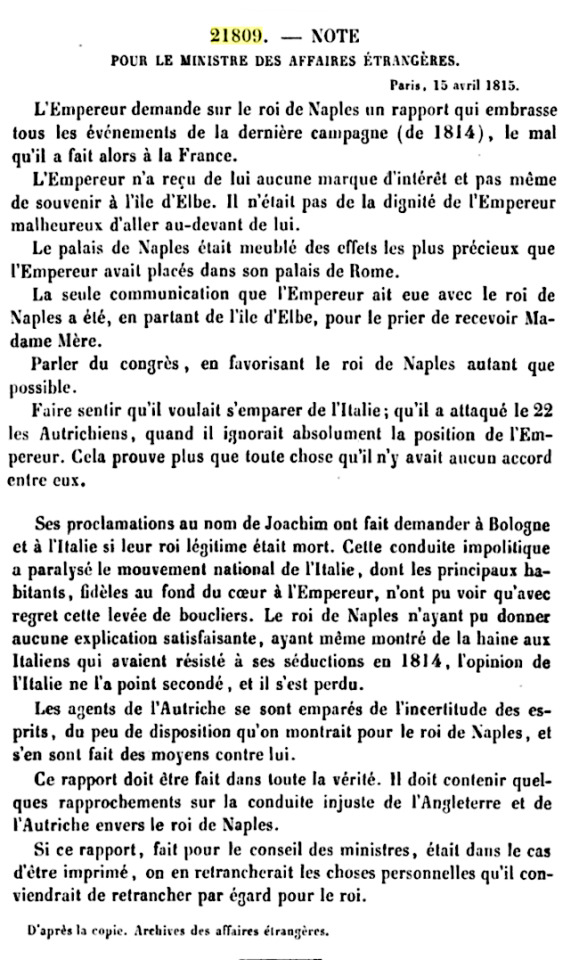#Air 11 Neapolitan
Text

https://888digitalarts.etsy.com/listing/1600951820
#gift#gift ideas#tshirt#tshirts#gifts#bestgift#gift idea#tshirt design#classic tshirt#xmas shopping#air jordan#nike#sneaker#air max#jordan 11 neapolitan#snikka match tees#sneaker girl#Sneaker Girl Shirt#Jordan 11 Neapolitan#11 Neapolitan Shirt#Jordan 11 Shirt#SNEAKERHEAD SNEAKER#Air 11 Neapolitan
0 notes
Text





Air Jordan 11
“Neapolitan”
#air jordan 11#jordan 11#air Jordan#rando#gaming#nike#retrogaming#drip#swag#fashion#toys#gijoe#hasbropulse#supremenyc#palm angels#celiné#pyer moss#salehe bembury#palaceskateboards#kidrobot#louisevuitton#drew
29 notes
·
View notes
Text

SHOP: Air Jordan 11 Retro 'Neapolitan'
#hypebeast#hype#sneakerheads#sneakerhead#stockx#goat#ebay#stadiumgoods#flightclub#grailed#kickscrew#farfetch#klekt#mercari#soleseriouss#sneakercommunity#airjordancommunity#nikeswoosh#swoosh#michaeljordan23#mj23#airjordanretro#jordan11#jordan11s#airjordan11retro#airjordan11#aj11#MichaelJordan#AirJordan#NIKE
6 notes
·
View notes
Text









AIR JORDAN 11 RETRO 'NEAPOLITAN' WMNS 2023 AR0715-101 Kickbulk Sneaker shoes
www.Kickbulk.co
4 notes
·
View notes
Photo

🇺🇲 11-0058 USAF (United States Air Force) Bell Boeing CV22-B Osprey landing at @aeroporto_napoli on a cloudy neapolitan afternoon, @usaf_pics @usafe_afafrica @nsanaples @sicurezza_e_soccorso @itamilradar @flightradar24 @boeing #tiltrotor #landing #gost #aeroporto #nuvoloso #sorpresa #engine #v22 #osprey #usaf #avuationhi #aviationlover #aviationdailyhi #avgeek #avgeekhd #instagood #instamood #instagram (presso Aeroporto Internazionale di Napoli) https://www.instagram.com/p/CpYG_kzssZ9/?igshid=NGJjMDIxMWI=
#tiltrotor#landing#gost#aeroporto#nuvoloso#sorpresa#engine#v22#osprey#usaf#avuationhi#aviationlover#aviationdailyhi#avgeek#avgeekhd#instagood#instamood#instagram
18 notes
·
View notes
Photo

Here is an updated mock-up based off of the colorway used. Actual color blocking may look different. The Air Jordan 11 ‘Neapolitan’ will debut in women’s sizing during November 2023 for $225. 🤝 @zsneakerheadz @sneakerfiles https://www.instagram.com/p/CoanDqnSc-R/?igshid=NGJjMDIxMWI=
3 notes
·
View notes
Video
youtube
Air Jordan 11 Neapolitan Sitting?
0 notes
Photo

Early Look at the Air Jordan 11 "Neapolitan" https://sneakerscartel.com/early-look-at-the-air-jordan-11-neapolitan/
0 notes
Text
Air Jordan 11 “Neapolitan” Coming This Year: First Look
Air Jordan 11 “Neapolitan” Coming This Year: First Look
0 notes
Text
Air Jordan 11 “Neapolitan” Coming This Year: First Look
Air Jordan 11 “Neapolitan” Coming This Year: First Look
0 notes
Text
Helfert, “Joachim Murat”, Chapter 4, Part 2
We left off when Joachim Murat had just left Naples in order to begin hostilities against the Austrians (or at least that is how they interpreted it).
Around the same time, possibly on the same 31st of March, Count Neipperg left Vienna to guarantee Murat the throne and empire in the name of the allied powers if he joined their alliance unconditionally, and Napoleon sent him a letter in which he informed him of his surprising successes from Lyon to Paris and promised him his strongest help, as he believed he could count on Murat in turn: "Send me an envoy as I will send one to you on a frigate". But while these two different messages were on their way to the king, the die had already been cast, and to Murat's misfortune, at first favourably for him. On April 2, his troops occupied Bologna, which FML Bianchi evacuated with 9000 Austrians. When the troops of the vanguard were called by the city gate guard, the message was: "Italian independence", which was met with enthusiastic cheers from the citizens; at least this is what Guglielmo Pepe reports in his memoirs (I p. 259), which are admittedly an excessively biased source. On the 4th, while the imperial troops, 1000 strong, withdrew into the fortress, the Neapolitans under General d'Ambrosio marched into Ferrara and, under the leadership and personal bravery of their king, forced their way across the Panaro after several hours of hot fighting, a victory which, of course, cost them dearly due to the severe wounding of their brave general Filangieri. Late in the evening, Joachim made his entry into Modena, from where Duke Francis IV had gained Austrian territory in time, while three days later, on 7 April, Generals Livron and Pignatelli captured the capital of Tuscany, which the Grand Ducal family left in flight-like haste. Count Nugent withdrew his force, which was half the size of the Neapolitan forces, to Pistoia, and even there thought himself not secure, so that two British frigates in the port of Livorno had to be ready to receive his baggage and guns in case he could not hold on.
But with this, Murat's cause had also reached the culmination of its successes. An attack he undertook on April 7 against the bridgehead of Occhiobello, defended by the imperial FML Mohr, failed completely. On the 8th, although no heavy artillery was available, he impatiently renewed the attack; six times, disregarding his own person, he led the columns forward to the assault, and each time they were defeated; the enterprise had to be abandoned. Neither did his two Guard legions make any progress on the Arno. Intimidated by false rumours, they advanced only hesitantly against Nugent, pushed back his advance troops by a few miles towards Pistoia, but hardly three days later they again cleared all the points they had won in order to regroup near Florence, April 9 to 13.
At this time Lord Bentinck was in Turin, where he received the news of Murat's departure. On April 5, he wrote to Murat, reproaching him for his breach of faith and denouncing the armistice between Naples and England; on April 7, on hearing that they had already come to blows, he issued an order to all commanders in the Mediterranean to begin hostilities against Naples.
King Joachim was still busy before the fateful bridgehead at Occhiobello, April 9, when he received the letter from his sworn enemy in Turin. He went back to Bologna. Now the safety of his kingdom had to be his first consideration, for attacks from the sea could not be long in coming. In any case, the anticipated surprise of the Austrians, the conquest and breach of their line along the Po, no longer seemed possible. But other things upon which he had intended to build his bright future had also vanished into thin air. It is true that he called all the officers and soldiers of the army of the Kingdom of Italy, who had been discharged the year before, under his banners and promised them the most generous provision for their future, just as he had promised their relatives in the event of their death; he also gave the army an Italian cockade, amaranth and green, April 10.
Amaranth... indeed. I do see a major obstacle for the cause of Italian unification.
But was there any chance that these proclamations would have a better effect than the two previous ones issued from Rimini? The latter had only been laughed at in Rome, where the king had boastfully summoned a general congress from all parts of the peninsula, and in other places there had been no lack of jeers about the call for the unification of all Italians being signed by two Frenchmen, Murat and Millet. Of all the armed troops that had been promised to him, only a battalion of barely 400 men was brought to him by the colonel of the disbanded Italian army, Negri, from the region on the lower Po, where he was at home; Joachim appointed him general on the spot. The lists of volunteers did not want to fill up either. People who had been freed from the prisons where the Austrian administration had put them for common crimes or political charges preferred to return to their families than to put their skins on the line on the battlefields. And the thing that depressed the King's courage more than anything else: were there not Italians under the Austrian banner in arms against him? A Modenese regiment had joined Bianchi, two Tuscan ones had placed themselves under Nugent! In addition to this there was the open response of the Austrian Cabinet to his manifesto of 30 March, in which all his ambiguities, all his aberrations and intrigues were held up to him, all his pompous phrases and promises were exposed in their hollow inanity, which had a downright devastating effect, April 11.
The moral blow was followed by one military blow after another. On April 10 and 11, Bianchi began his advance, attacked Carpi in a storming manner, which General Guglielmo Pepe, after great losses - 600 prisoners, including 12 officers - evacuated, whereupon the king also abandoned Mirandola Modena and Reggio and led his troops back behind the Panaro.
In one of his footnotes stating his sources, Helfert also mentions the report that Napoleon requested from his minister of foreign affairs (Caulaincourt) during the Hundred Days, in Corresp. Nap. XXVIII No. 21809 p. 98 f. of 15 April: a note in which the Minister of Foreign Affairs is ordered to begin a detailed report on the conduct of the King of Naples in the campaign of 1814: "Ce rapport doit être fait dans toute la vérité. Il doit contenir quelques rapprochements sur la conduite injuste de l'Angleterre et de l'Autriche envers le roi de Naples."
I’ve checked this note and made a quick screenshot as it seems quite interesting. Napoleon basically already decrees what the result of the investigation has to be.

10 notes
·
View notes
Text

Nike
Air Jordan 11
“Neapolitan”
1 note
·
View note
Text

COUNTDOWN: Air Jordan 11 Retro ‘Neapolitan’
Release Date: 2023-11-11
#sneakercommunity#shoegame#sneakerporn#hype#hypebeast#sneakerhead#sneakerheads#airjordancommunity#nikeswoosh#swoosh#nikeair#michaeljordan23#mj23#jumpman#jumpman23#jordanbrand#jordanhead#jordanheads#airjordanretro#jordans#jordan#jordan11#jordan11s#airjordan11retro#airjordan11#aj11#MichaelJordan#AirJordan#NIKE
3 notes
·
View notes
Photo

"Small black eyes,
if you look,
let houses and cities fall down.[...]"
Giovanni Meli, The eyes [According to the tradition, Meli is referring to Lucia Migliaccio's beautiful black eyes].
Donna Lucia Maria was born in Siracusa on January 18th 1770. She was the daughter of Don Vincenzo Migliaccio e Bonanno, of the Princes of Baucina and 8th Duke of Floridia and San Donato, and Spanish descendant Dorotea Borgia e Rau, of the Marquises of Casale. At 6, following her father's death, and as her parents' only living child (her brother Ignazio had already died at just 5 years old), she inherited the Duchy of Floridia.
On April 19th 1781, only 11 years old, the little Duchess married in Palermo the 25 years old Benedetto Maria Grifeo del Bosco (he was born on November 17th 1755), Duke of Ciminna and firstborn of Gerolamo Maria 7th Prince of Partanna. The Grifeo was an incredibly old and noble Sicilian family whose ancestors received their titular fief during the rulership of the Great Count Ruggero, in 1091, and the baronage in 1139, during the reign of his son, King Ruggero II of Sicily. In 1802 the Prince Gerolamo Maria died, and Benedetto became the 8th Prince of Partanna, making Lucia the Princess consort.
Benedetto also inherited the role of Deputy of the Kingdom, and on November 4th of the same year, he was awarded by King Ferdinando IV of Naples and III of Sicily with the knighthood of the Insigne Real Ordine di San Gennaro. The Prince of Partanna also served as Gentleman of the Bedchamber and State Councillor, giving his wife the chance to frequent Palermo high society and even the Royal court during King Ferdinando's long periods spent in Sicily. Lucia was praised for her intelligence, artistic skills and beauty (in particular her black eyes).
The Princess bore her husband nine children, five of whom survived infancy: Vincenzo (future 9th Prince of Partanna), Giuseppe, Leopoldo, Luigi. Marianna, the only daughter, is considered by some people the illegitimate daughter of King Ferdinando, since she was born in 1808, when Lucia was already the sovereign's lover, and given the deep affection Ferdinando always exhibited for Marianna.
Since 1806, the King and his court, had been forced to move to Palermo to escape the French army which had invaded the peninsular part of the Bourbonic kingdom and would establish the Kingdom of Naples under the rulership of Napoleon's brother-in-law, Joachim Murat.
In the meantime, Lucia's beauty (not ruined in the least by the numerous pregnancies) gave soon rise to a lot of gossip, and her name was linked to other gentlemen's ones, like the Neapolitan Lucio Caracciolo, Duke of Roccoromana, renowned womanizer. The existence of a relationship between the two is (according to some) supported by the fact that, once married to the King, she asked her husband to pardon the Duke, as Caracciolo had been loyal to Murat and even took part to the Russian Campaign. Despite his traitorous track records, in fact, the Duke retained until the end his favoured position at the Bourbonic royal court.
On January 16th 1812, King Ferdinando, who since 1806 had been able to count on the help of the British army and, thanks to them, retain control of Sicily, was nonetheless forced by his protector Lord Bentinck to hand over his powers (on the basis of a fictitious illness) in favour of his son Francesco, who was appointed Regent of the Kingdom. The same year, on March 28th, Don Benedetto Grifeo died at 56, leaving Lucia free to pursue her relationship with Ferdinando with fewer restrictions especially since the King's rightful wife, Maria Carolina, having lost any political influence and accused to have plotted against the British allies was forced to leave Sicily to never return.
On July 1814 Ferdinando pronounced himself recovered and took back control of the government. As he intended to keep the peace in the Sicilian territory, he declared he would maintain (at least officially) the Sicilian Constitution which had been promulgated in 1812, under the regency of his son. Two months later, on September 8th, Maria Carolina would be found dead in her chamber in Hetzendorf castle, in Vienna.
Now free, Ferdinando asked Lucia to marry him, and she was too happy to accept. The couple married in Palermo's Palatine Chapel, in a secret ceremony officiated by Friar Salvatore Maria Caccamo, the King's confessor and chaplain, and with Vincenzo and Carlo De Falco as only witnesses, on November 27th, barely 80 days after Maria Carolina's death. Lucia was 44, while her husband was 63.
Ferdinando's son and heir, Francesco had tried to dissuade his father on the ground of the many rumours going around Lucia's marital fidelity, to which the old King supposedly retorted: "Penza ‘a mammeta, guagliò, penza ’a mammeta!" ("Think about your mom, kid, think about your mom!"), alluding to the deceased Queen's affairs. The only thing that cheered Francesco was that, as a morganatic union, no child born from that marriage could make any claim on the Throne.
As soon as people got wind of the secret wedding ceremony, the couple was critiqued as their marriage (which moreover had happened too soon) was seen as an attempt made by two cheaters who, now both widowed, had tried to patch things up.
Unlike her illustrious and strong willed predecessor, Lucia proved to be discreet, moderate and accommodating, staying away from political affairs and intrigues. Ferdinando was particularly satisfied with his new wife, bragging that he had now a wife that let him do whatever he wanted, and a Minister that gave him little to do.
Even though Napoleon had already been (apparently) defeated in Leipzig and sent to exile on the island of Elba, Murat was still ruling in the Neapolitan territory, making for Ferdinando impossible to return, even with the British support. It would be only one year later, that the former Emperor's brother-in-law would be defeated in the battle of Tolentino, at the beginning of May. Thanks to the agreements made during the Congress of Vienna, and especially since the Treaty of Casalanza signed on May 20th 1814, Ferdinando was given back almost his whole former territories. In this same occasion, although, he lost Malta (which had been part of the Kingdom of Sicily since XIth century) which became a British protectorate, and the Stato of the Presidi (which included the Island of Elba), donated to the Gran Duchy of Tuscany.
In 1815 Ferdinando returned to Naples with Lucia by his side, while his son Francesco was left in Sicily to act as Lieutenant of the Kingdom. In Naples Lucia was warmly welcomed and was showed the due respect as a real Queen. Moreover, her beauty also helped attracting many artists' attention.
That same year Lucia received from her husband a special gift. The King in fact bought for his wife the vaste estate located in the Vomero quarter in Naples, which once had belonged to the Prince Giuseppe Caracciolo of Torella. As a tribute of Lucia's title of Duchess of Floridia, the manor was renamed la Floridiana, while the park annexed was called Parco Grifeo (deriving from another of her titles). The property was enriched in 1817 with the purchase of other surroundings plots, while between 1817-19 architect Antonio Niccolini cured the reconstruction in Neoclassical style of the pre-existing villa and the re-configuration of the park as an English landscape garden. Friedrich Dehnhardt, the then Director of the Botanical Garden of Naples, oversaw the bedding of more than 150 species of plants, which went to enrich the already beautiful park. By 1819, the estate comprehended two villas (Villa Floridia – later Floridiana - and Villa Lucia), a bridge which connected the two habitations, an open-air theatre called "della Verzura", a Neoclassical circular temple, fake ruins, fountains, statues and greenhouses. La Floridiana was to be Lucia and Ferdinando's haven of tranquillity for the next few years.
On December 8th 1816 Naples and Sicily were merged into a single state, which was named Kingdom of the Two Sicilies (with Naples as its Capital, much to Palermo and the Sicilian in general's chagrin), and Ferdinando became the first sovereign of the now unified reign, and would be known as Ferdinando I of the Two Sicilies. The heir Francesco resumed his role as Regent and Lucia as Royal spouse.
In his last years, Ferdinando had to deal with revolutionary movements in both Sicily and Naples. He was forced to sign the Constitution and once more to entrust the executive powers to Francesco. It was only in 1821, with the help of the Austrian army which occupied Naples (the revolution in Sicily had already been stopped), the King managed to restore the Bourbonic absolute monarchy and the Constitution was withdrawn. Ferdinando died four years later, on January 4th 1825, after 57 years of reign. He was 73, and his marriage with Lucia had lasted 11 years. Lucia spent her remaining time in her Floridiana. She died one year and three months later, on April 26th 1826. She was buried in the Church of San Ferdinando, in Naples, separated from her husband, who lies in the Church of Santa Chiara, burial place of the Bourbonic Kings of Naples.
Her son Vincenzo inherited his mother's titles and fiefs, while La Floridiana was divided in 1827 by the deceased Duchess' children into three distinct parts. Villa Lucia was firstly owned by her son Luigi Grifeo, Minister to the Grand Duchy of Tuscany, and then passed from hand to hand. The villa is currently a private residence whose property is divided into three wealth Neapolitan families. Villa Floridiana and the park, on the other hand, underwent many alterations at the hands of the heirs, until in 1919 they were sold to the Italian State and became the Museum of Ceramic.
#women#history#women in history#history of women#historical women#lucia migliaccio#ferdinando i of the two sicilies#modern sicily#myedit#historyedit#people of sicily#women of sicily#house of bourbon of the two sicilies#siracusa#province of siracusa#Palermo#province of palermo
24 notes
·
View notes
Photo

🇺🇲 11-0058 USAF (United States Air Force) COORS81 Bell Boeing CV22-B Osprey landing at @aeroporto_napoli on a cloudy neapolitan afternoon, @usaf_pics @usafe_afafrica @nsanaples @sicurezza_e_soccorso @itamilradar @flightradar24 @boeing #tiltrotor #landing #gost #aeroporto #nuvoloso #sorpresa #engine #v22 #osprey #usaf #avuationhi #aviationlover #aviationdailyhi #avgeek #avgeekhd #instagood #instamood #instagram (presso Aeroporto Internazionale di Napoli) https://www.instagram.com/p/CqAFtEiMrJo/?igshid=NGJjMDIxMWI=
#tiltrotor#landing#gost#aeroporto#nuvoloso#sorpresa#engine#v22#osprey#usaf#avuationhi#aviationlover#aviationdailyhi#avgeek#avgeekhd#instagood#instamood#instagram
0 notes
Video
youtube
AIR JORDAN 11 DMP, A MA MANIERE X AIR JORDAN 5, JORDAN 11 NEAPOLITAN, KO...
#youtube#air jordan 11#air jordan 5#nike sb dunk low#nike sb dunk high#nike kobe 6#air jordan 12#air jordan#air jordans
0 notes